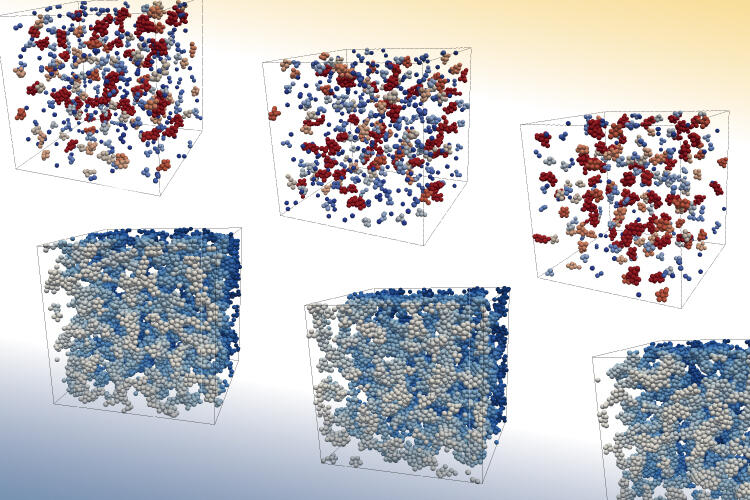Liquids, with their flowing dynamics, are often far from equilibrium. This makes it particularly hard to model processes in soft matter or living tissue, which contain liquids. New research from The University of Tokyo's Institute of Industrial Science (IIS) offers an elegant approach to modeling the self-organization of out-of-equilibrium systems.
Such systems naturally try to self-organize into more stable states. Colloidal suspensions - homogeneous suspensions of undissolved particles in a liquid, which are widespread in nature - tend to separate out over time if colloids strongly attract with each other. A major difficulty in modeling this process is the complex dynamical interaction between colloids and liquid. The two components have very different dynamics that are hard to unite in a single model.
The IIS study, published in Nature Computational Materials, resolves this through an approach termed Fluid Particle Dynamics (FPD). Instead of being treated as solids, the suspended colloid particles are simulated as undeformable highly viscous liquid droplets. This effectively makes the colloidal suspension a binary liquid mixture, and removes the need for complicated treatment of a solid-liquid boundary condition.
To validate the simulations, they were compared with 3D microscope studies of demixing of real colloidal suspensions, where the colloids aggregate into larger clusters. "The key factors to control the dispersion stability were the intercolloid potential, which controls how particles interact, and the temperature," says study co-author Michio Tateno. "Choose those carefully, and the kinetic process of demixing is very accurately reproduced."
Other than the intercolloid potential and temperature, the model contains no adjustable parameters, which makes it generally applicable to non-equilibrium mixtures of all kinds, and testifies to the essential correctness of the underlying FPD concept. However, the study did confirm one crucial requirement for any model of such systems - hydrodynamic interactions.
"The particles in a colloidal suspension, although they are separated from each other, interact indirectly through their effects on the solvent" explains lead author Hajime Tanaka. "This 'hydrodynamic interaction' is present in our FDP model. Without it - for example, in models neglecting the motion of the solvent - the phase separation kinetics are completely wrong."
Tateno and Tanaka hope that the simplicity and accuracy of their parameter-free FPD predictions will open new avenues to simulating soft matter and biological fluids, and could one day improve the computer-aided design of advanced colloidal materials.
Journal article
Michio Tateno and Hajime Tanaka. "Numerical prediction of colloidal phase separation by direct computation of Navier-Stokes equation," Nature Computational Materials.
DOI: 10.1038/s41524-019-0178-z
Research Contact
Hajime Tanaka, Professor
Tel: +81-3-5452-6125 Fax: +81-3-5452-6126
URL: http://tanakalab.iis.u-tokyo.ac.jp/

